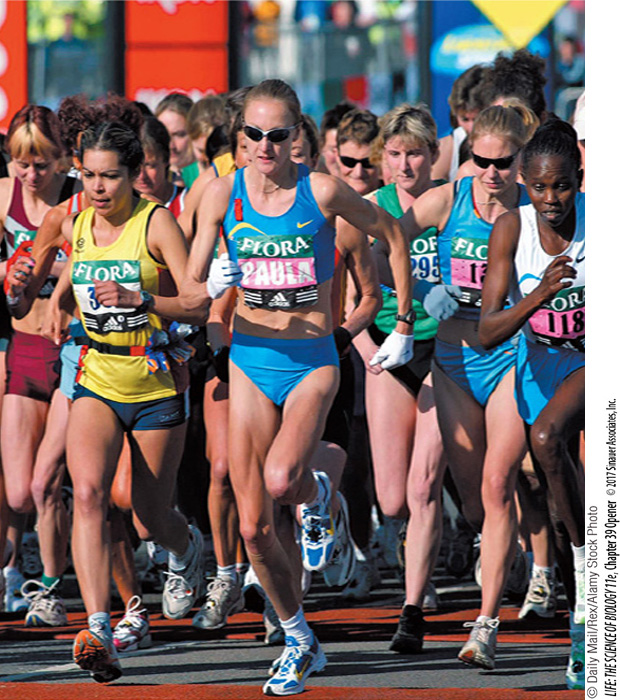Chapter Introduction
823
39
key concepts
39.1
Animals Are Composed of Organs Built from Four Types of Tissues
39.2
Physiological Systems Maintain Homeostasis of the Internal Environment
39.3
Biological Processes Are Temperature-Sensitive
39.4
Body Temperature Depends on the Balance between Heat In and Heat Out of the Body
39.5
Body Temperature Is Regulated through Adaptations for Heat Production and Heat Loss
Physiology,
Homeostasis, and
Temperature
Regulation
PART NINE Animals: Form and Function

investigating life
Heat Limits Physical Performance
The 2008 New York City Marathon took place on a cold, clear, windy day in November. For the third time, the first-
Elite runners generally have their best times when temperatures are below 10°C. The 2012 Boston Marathon coincided with an unseasonable April heat wave, with temperatures exceeding 27°C. During the race, 120 runners were rushed to hospitals with severe heat stress.
When a person’s internal body temperature rises above 40°C, major organs begin to fail, a condition known as heat stroke. Every year some athletes suffer heat stroke, which leads to death in a high percentage of cases. Soldiers in desert environments are at extreme risk of heat stroke, as are workers in many occupations, including firefighting, agriculture, and construction.
Heat stroke is a particular danger for those who are active in the heat because working muscles generate heat. The blood carries that heat out of the muscles and distributes it throughout the body, raising the temperature of the body’s internal tissues. Some of the heated blood flows to the skin, where heat can be lost to the environment, but humans are subject to the problems faced by all mammals in losing excess heat. First, their normal internal temperatures are not far from the environmental temperatures that cause heat stress, so they don’t have much of a safety zone. Second, most mammalian skin surfaces are covered with an insulating layer of fur—
A major evolutionary adaptation in mammals for heat loss is efficient heat-
How can we increase heat loss from the body to protect against heat stress?